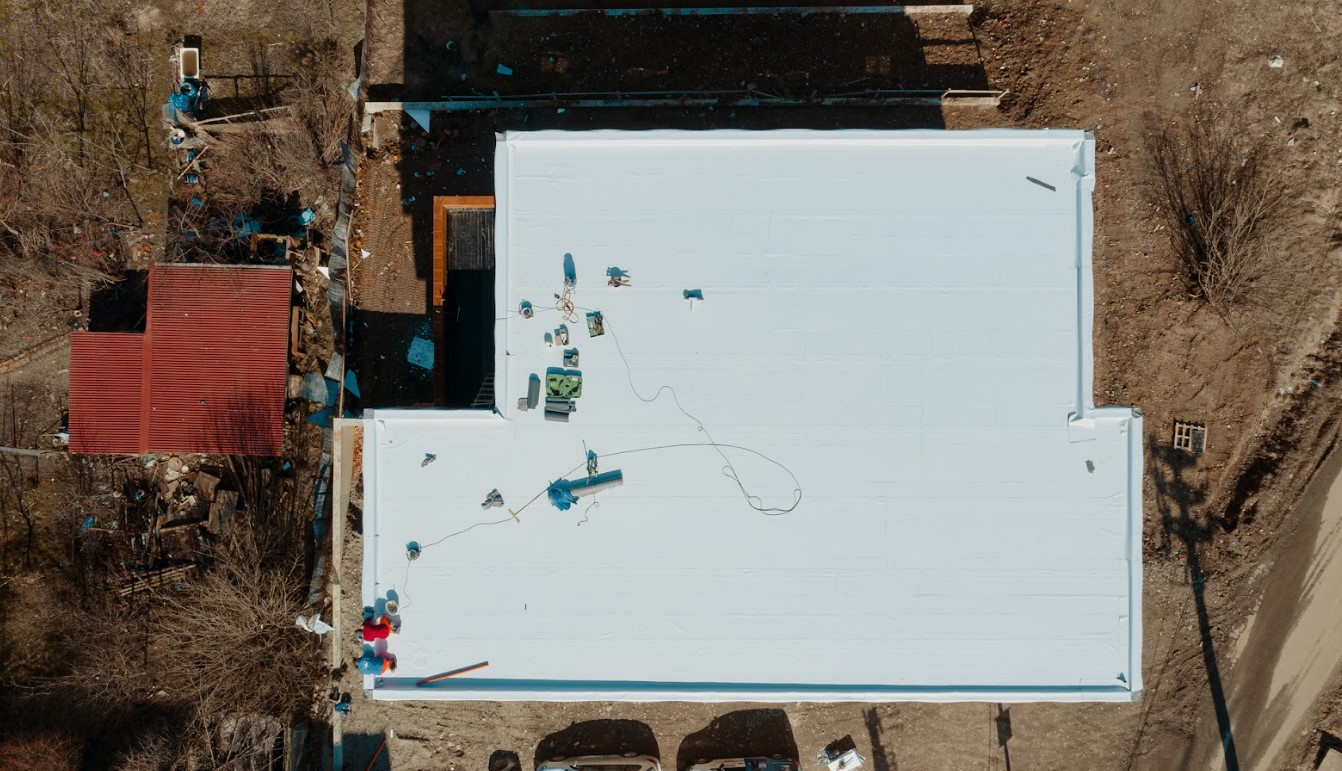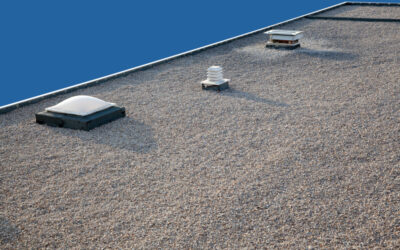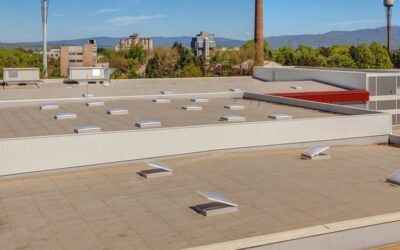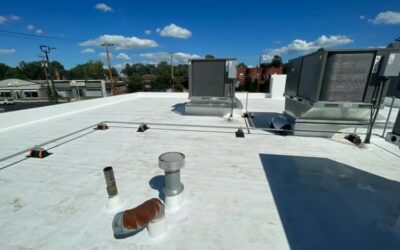EPDM roofing, short for Ethylene Propylene Diene Terpolymer, is a top choice for many commercial properties thanks to its durability and cost-effectiveness. If you’ve been considering an upgrade to your commercial building’s roof, our guide to EPDM roofing will help you understand its advantages, disadvantages, and suitability for various structures. Discover why EPDM commercial roofs continue to be a popular option among business owners and contractors alike.
What is EPDM Roofing?
EPDM roofing is a type of synthetic rubber roofing membrane designed primarily for low-slope commercial buildings. It is made from a combination of ethylene and propylene, derived from natural gas and oil. Known for its exceptional durability and flexibility, EPDM has been a trusted roofing material for over 60 years.
Features of EPDM Roofing
- Durability: With proper maintenance, EPDM roofs can last up to 30 years or more.
- Weather Resistance: Resistant to UV rays, extreme temperatures, and harsh weather conditions.
- Flexibility: Remains pliable in low temperatures, making it ideal for fluctuating climates.
- Eco-Friendly Options: Some EPDM materials can be recycled, making it an environmentally friendly choice.
The Pros and Cons of EPDM Roofing
Like any roofing system, EPDM commercial roofs come with their own set of advantages and potential drawbacks. Here’s a balanced look to help you decide if it’s the right choice for your building.
Advantages of EPDM Roofing
- Cost-Effective: EPDM roofing is one of the most affordable roofing materials on the market.
- Ease of Installation: Lightweight and easy to install, it reduces labor costs.
- Minimal Maintenance: Requires less upkeep compared to other roofing systems.
- Resilience: Can withstand hail, high winds, and other extreme weather conditions.
- Energy Efficiency: Available in black (absorbs heat) or white (reflects heat), which helps regulate building temperatures.
Disadvantages of EPDM Roofing
- Vulnerability to Punctures: While durable, EPDM can be punctured by sharp objects or heavy foot traffic.
- Appearance: Typically available in black or white, EPDM lacks the aesthetic versatility of other materials.
- Seam Weakness: Improper installation can lead to seam-related leaks.
EPDM Roofing Installation Process
Proper installation is critical for the performance and longevity of EPDM commercial roofs. Here’s an overview of how it’s typically done:
- Surface Preparation: The roof deck is cleaned and inspected to ensure it’s ready for installation.
- Membrane Application: EPDM can be fully adhered, mechanically attached, or ballasted, depending on the building’s requirements.
- Sealing Seams: Seams are sealed using adhesive tape or liquid adhesive to prevent leaks.
- Flashing Installation: Flashing is applied around roof edges, vents, and other protrusions for added protection.
To learn more about industry best practices for roofing installations, check out resources from organizations like the National Roofing Contractors Association or the Energy Star Program.
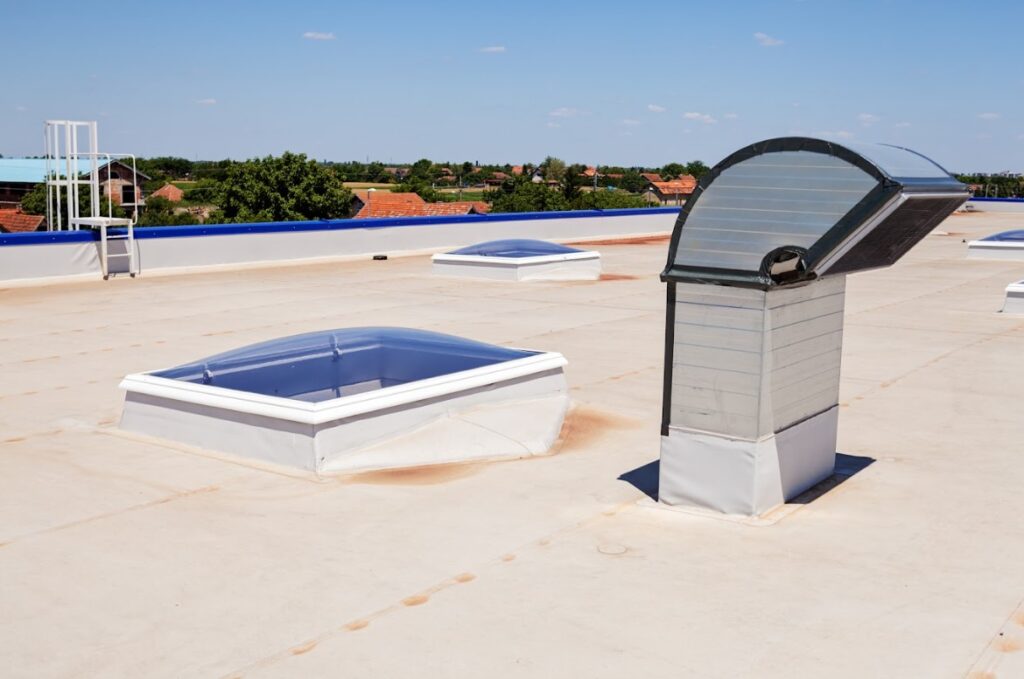
EPDM Commercial Roofs vs. Other Roofing Options
When selecting a roofing material, it’s essential to compare your options. Here’s how EPDM stacks up against some other popular commercial roofing systems.
EPDM vs. TPO Roofing
- Durability: EPDM tends to last longer, while TPO is slightly more resistant to punctures.
- Cost: EPDM is generally more affordable than TPO.
- Energy Efficiency: TPO’s reflective surface offers better cooling properties for hot climates.
EPDM vs. Modified Bitumen Roofing
- Installation: EPDM is easier and quicker to install.
- Weather Resistance: EPDM performs better in extreme weather conditions.
- Maintenance: Modified bitumen requires more frequent inspections and repairs.
Maintaining Your EPDM Roof
Proper maintenance is crucial to extending the lifespan of your EPDM commercial roof. Here are some tips:
- Regular Inspections: Schedule semi-annual inspections to catch small issues before they escalate.
- Debris Removal: Clear leaves, branches, and other debris to prevent water pooling.
- Prompt Repairs: Address punctures and seam issues immediately to avoid leaks.
- Professional Cleaning: Avoid using harsh chemicals that can damage the membrane.
For more maintenance tips, refer to the Environmental Protection Agency’s green building guidelines.
Who Should Consider EPDM Commercial Roofs?
EPDM roofing is particularly suitable for:
- Warehouses: Its durability and low maintenance make it ideal for industrial settings.
- Office Buildings: Energy-efficient EPDM can help reduce utility costs.
- Retail Spaces: Cost-effective and long-lasting, it’s a practical choice for retail owners.
Get Professional EPDM Roofing Services
Choosing the right contractor is just as important as selecting the right roofing material. At Industrial Roofing Contractors, we specialize in EPDM commercial roofs and pride ourselves on delivering top-quality results.
With our team of experienced professionals, we ensure your roof is installed correctly, maximizing its lifespan and performance. Plus, we offer free inspections and estimates, so you can confidently plan your project.
Get a free estimate now and take the first step toward a reliable, cost-effective roofing solution for your commercial property!


